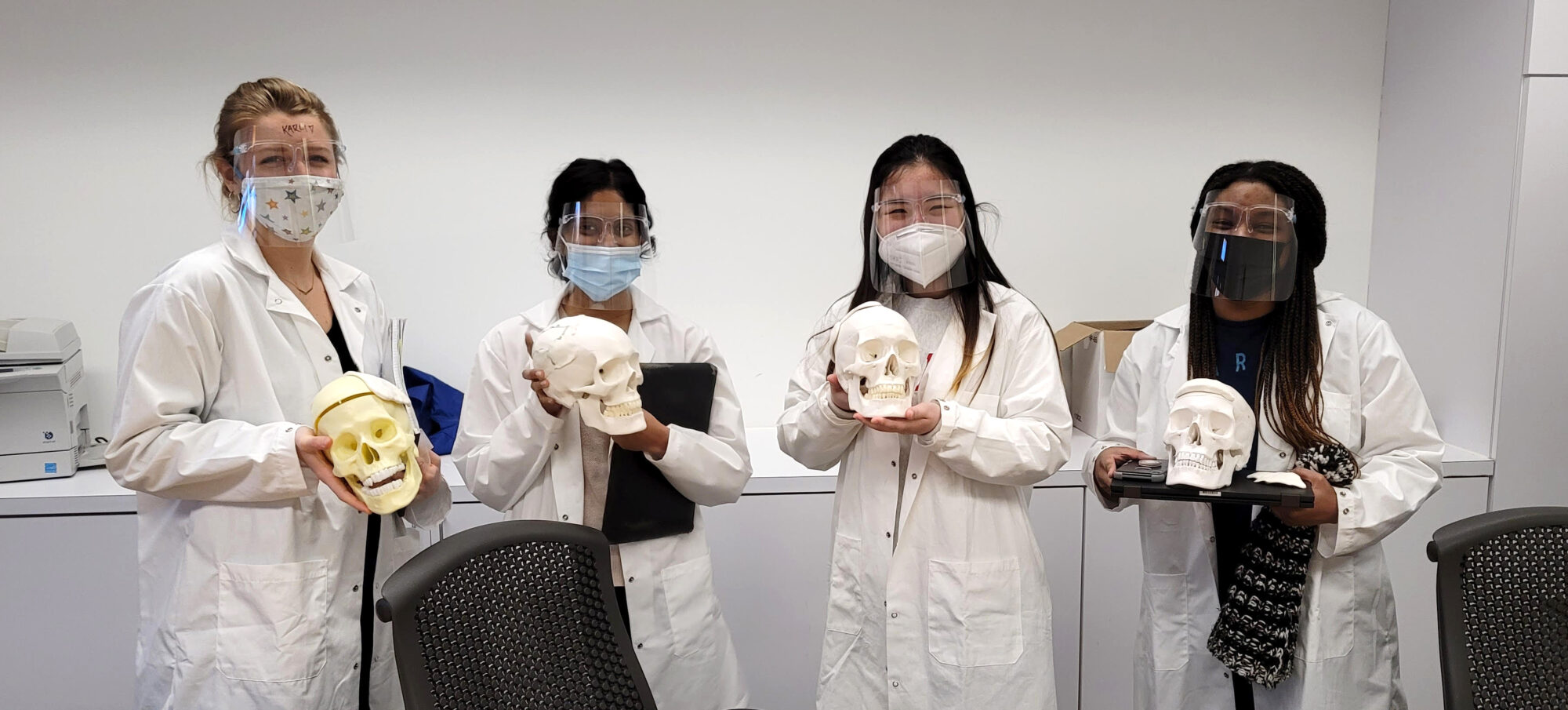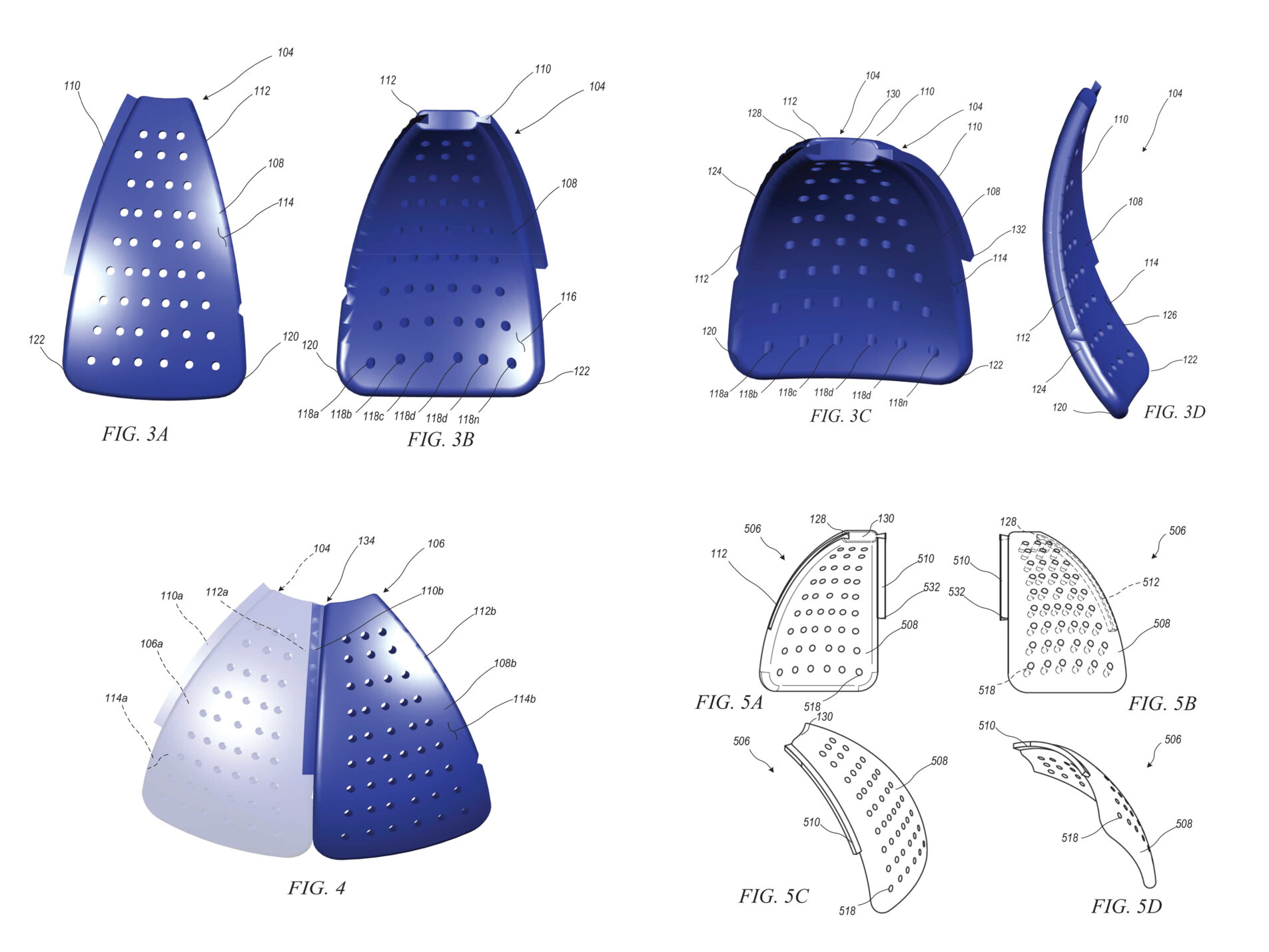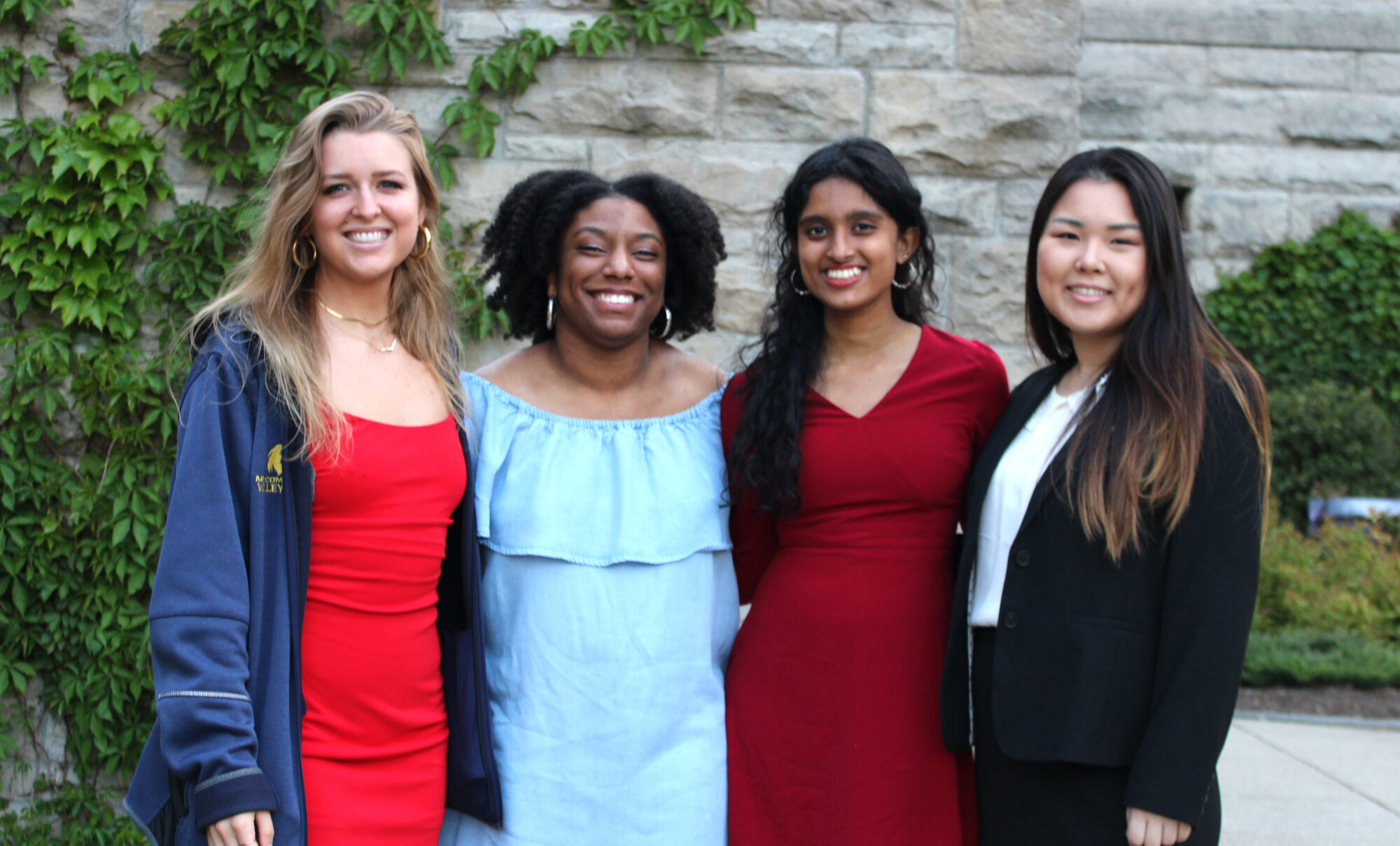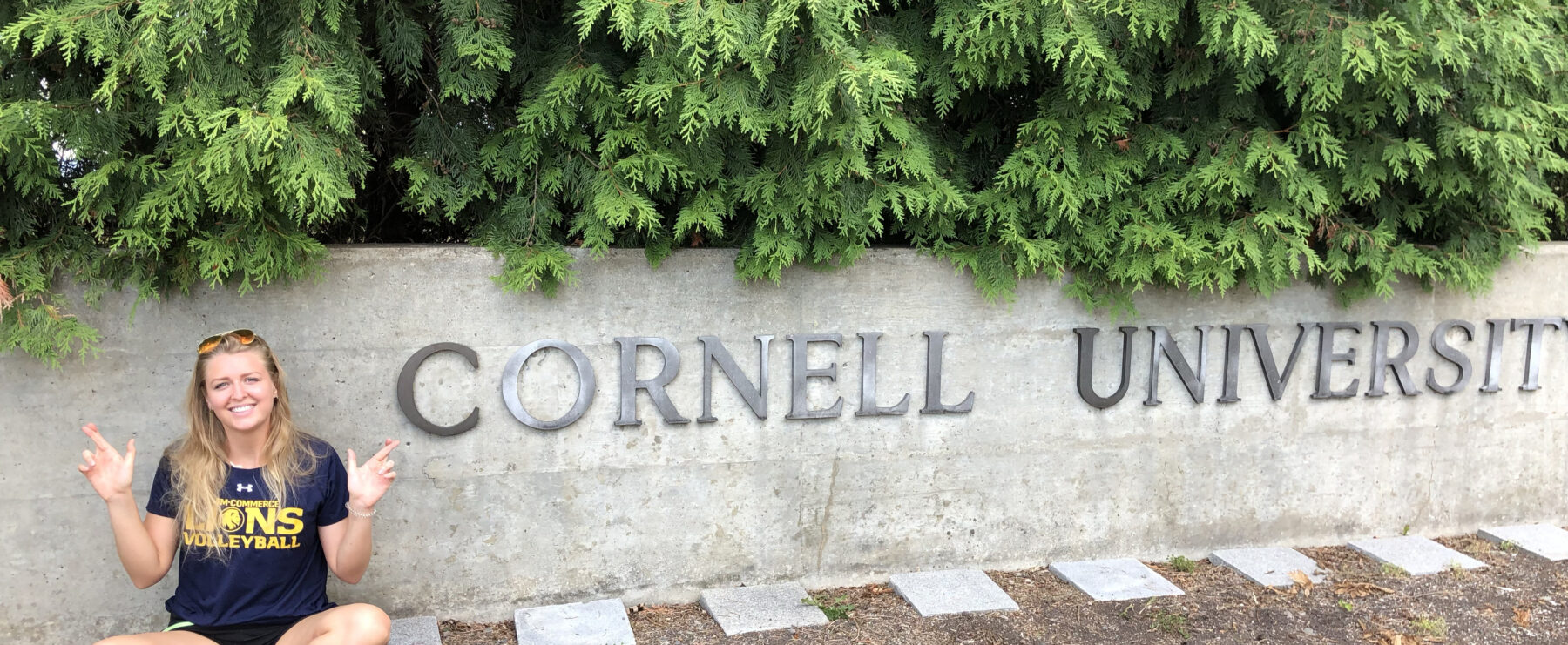TAMUC Alum Designs Cranial Prosthesis With Cornell University Team
In the two years since graduating from Texas A&M University-Commerce, Karli Thornton has been busy changing the world. She has worked internationally, earned her master's degree in biomedical engineering from Cornell University in New York and designed a patent-pending cranial prosthesis device that can potentially help millions of patients.
None of her success would be possible, she says, without the foundation she built at A&M-Commerce. “I have a lot of love and Lion pride in my heart,” she said.
Thornton transferred from Frank Phillips College in Borger, Texas, in 2016 to play volleyball for A&M-Commerce.
“I pretty much came to A&M-Commerce solely for volleyball,” she said. “And, oh my gosh, it turned into the best engineering experience of my life.”
She wanted to pursue a pre-med track but switched to industrial engineering after meeting Andrea Graham, Ph.D., who is head of the Department of Engineering and Technology.
“Dr. Graham said, ‘If you're interested in medicine, you can be an industrial engineer,'” Thornton recalled.
Thornton was initially hesitant, but she soon discovered that industrial engineers are often employed in high-level administrative positions at hospitals where they work on process improvement, emergency room flow optimization and more.
During her time in the industrial engineering program, she worked with several professors who played big roles in her academic preparation.
She met former assistant professor Marty Yaqub, Ph.D., who encouraged her to consider a Master of Engineering degree after completing her bachelor's degree. She also worked on several projects with Perry Moler, Ph.D., assistant professor of engineering and technology, who introduced her to SolidWorks, a computer-aided design and engineering software.
“A&M-Commerce provided a different skill set and mentality,” Thornton explained. “I learned to view a problem for its possibilities, not its constraints.”
The dean of the College of Science and Engineering, Brent Donham, Ed.D., said he isn't surprised at Thornton's success.
“We are very proud of Karli and her achievements. She was a highly motivated self-starter and a strong leader during her time at A&M-Commerce,” Donham said. “Karli is a shining example of the quality graduates that come from the College of Science and Engineering.”
After graduating in fall 2019 with a Bachelor of Science in industrial engineering, Thornton wasn't quite ready to pursue her master's degree. She wanted an internship and she longed to see Israel. She found both opportunities as a biomedical intern at Medinol, a maker of cardiovascular stents based in Tel Aviv. The job also matched well with her growing interest in biomedical engineering.
“They taught me amazing engineering skill sets and completely shifted my view on building a product and the device itself,” she said of her yearlong experience at Medinol.
While in Israel, she spent a day at a coffee shop in Tel Aviv where she applied to eight schools that offered Master of Engineering degrees in biomedical engineering. She was surprised to get accepted by seven of the schools, including Cornell University in Ithaca, New York.
Thornton chose Cornell and began her master's studies in fall 2020. Along with a year of study, the program required her to complete a biomedical engineering project. She was assigned to a team tasked with designing a cranial prosthesis for craniectomy patients.
A craniectomy is surgery to remove a portion of bone from the skull—often called a bone flap—to release pressure resulting from brain trauma. Doctors have an increased chance of stopping the swelling and reducing post-surgery complications by leaving the bone flap out for longer periods of time instead of replacing it during surgery.
Thornton said there are several internal options for replacing a bone flap during surgery but not many external options for protecting the brain when the bone flap is removed for an extended period, or even permanently.
A neurosurgeon at Weill Cornell Medicine, Dr. Susan Panullo, requested help engineering a new cranial prosthesis. She envisioned an external device that would protect the brain from additional trauma and allow patients to live fuller lives.
Thornton's team set out to design a device that would be aesthetically pleasing and comfortable. The device also needed to pass through TSA security checkpoints. And, since each craniectomy is unique, the design needed to be customizable for each patient.

They spent a year working on the device, from conceptualization to completed product.
As the only member of the team with 3D modeling experience, Thornton became the project manager and device designer.
“A big reason I was so integral in this project is because I learned so much at A&M-Commerce about project management and 3D modeling,” Thornton reports.
She collaborated with Moler to learn Fusion 360, the modeling software used at Cornell. Although he wasn't involved in the actual product design, Moler was an integral part of the 3D modeling process.
“He was there every step of the way; I could not have done it without him,” she said.
Moler was happy to help on the project.
“When Karli reached out for assistance, I didn't hesitate because I know that any project she works on is going to have a positive impact on society,” Moler said.
The project expanded to collaborate with a neurosurgery clinic in Tanzania where thousands are killed or seriously injured in motorcycle accidents each year, resulting in large numbers of neurosurgery patients. This global expansion meant that the team's cranial prosthesis needed to be cost-effective so that large numbers of the device could be sent to non-profits around the world.
The final product consists of a device with interconnecting joints. Multiple pieces can be joined together to form one protective device, making it customizable to the wearer. The team has secured a provisional patent and Thornton is optimistic that the device will eventually be FDA approved due to its thorough design, material composition and construction.

Thornton said she felt empowered by the process because she and her teammates—Stacey Kim, Shwetha Sairam and Tyler Webb—designed a viable, cost-efficient device that can help millions of people. She said they had a wonderful experience working directly with Panullo, who served as the team's product advisor and sponsor.
“Dr. Panullo is one of the most positive and encouraging people I've ever worked with, and she's so successful in an elite environment,” Thornton said.
The team competed at the Cornell Biomedical Engineering Design Project Showcase earlier this year against more than a dozen other teams that also designed devices and mechanical processes.
They placed first in the design category and won the showcase's pitch competition, similar to the “Shark Tank” television show in which inventors and entrepreneurs pitch their ideas to would-be investors. The team also placed third in the Fusion 360 3D Modeling Software Device Drawing competition.
Thornton graduated from Cornell with her Master of Engineering in biomedical engineering in May of this year. She reflects often on the academic and experiential foundation she built at A&M-Commerce, which she said prepared her well for the success she's experienced so far.

“I've worked internationally and in New York, which might as well be international,” Thornton quipped. “I can say that I've never once felt unprepared. While dealing with big Ivy League people and working in a different country, I did just fine—all thanks to A&M-Commerce!”
Learn more about engineering and technology programs at A&M-Commerce.






